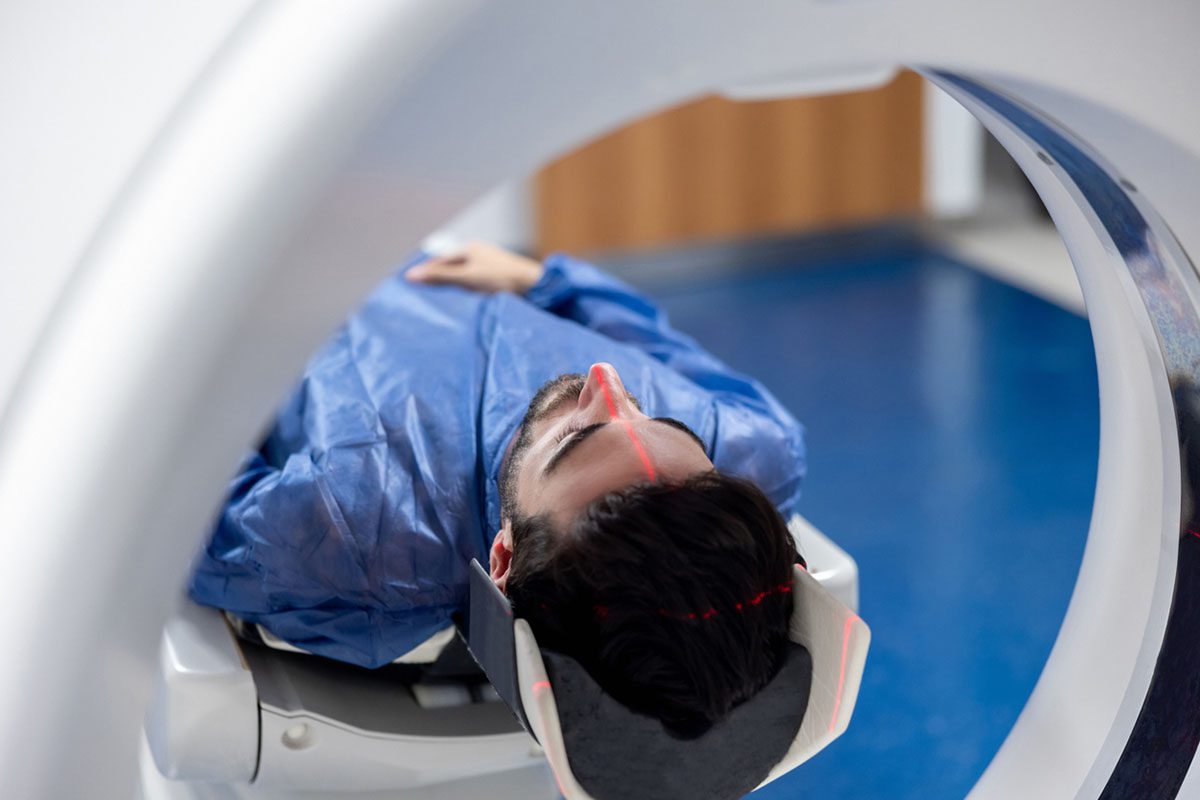Because this piece does not have an abstract, we have provided for your benefit the first 3 sentences of the full text.
Olfactory reference syndrome (ORS) is a psychiatric condition characterized by concerns about perceived body odor, which may be accompanied by repetitive behaviors to mask body odor and avoidance of social situations. ORS has been proposed as an obsessive-compulsive and related disorder in the DSM-5. There is no established standard treatment for ORS.
Olfactory reference syndrome (ORS) is a psychiatric condition characterized by concerns about perceived body odor, which may be accompanied by repetitive behaviors to mask body odor and avoidance of social situations.1 ORS has been proposed as an obsessive-compulsive and related disorder in the DSM-5.2 There is no established standard treatment for ORS. Some case studies have reported (partial) response with clomipramine,1,3,4 while others have reported nonresponse.5-7 The interpretation of previous case reports on behavioral therapy and eye movement desensitization and reprocessing (EMDR) is impeded by the paucity of objective outcome assessments.5,7-9 To date, no report on cognitive behavioral therapy (CBT) has been published. We present a case of ORS in a woman who was successfully treated with CBT.
Case report. Ms A, a 23-year-old Creole woman with no history of physical disease, had been suffering from ORS symptoms for 10 years. She was diagnosed (DSM-IV criteria) with generalized anxiety disorder (GAD), which developed after the onset of ORS symptoms. She had an overvalued idea that she emitted a sweaty body odor that disgusted people around her. She interpreted other people’s frowning or distancing themselves as proof for her beliefs. She experienced severe distress in confined spaces (classroom and public transport) where people could smell her presumed odor. She regularly checked her odor, showered every time she left home, and used excessive amounts of deodorant. She repeatedly sought consultation with dermatologists. Due to avoidance and distress, her study performance and social life were impaired. She had received supportive psychotherapy, which was associated with limited improvement. Ms A was therefore referred for assessment and further treatment.
Pretreatment physical, neurologic, and laboratory evaluation showed no abnormalities. Her pretreatment score on the Body Dysmorphic Disorder Modification of the Yale-Brown Obsessive Compulsive Scale (BDD-YBOCS)10 was 28 out of 48, indicating moderate symptoms (Table 1). CBT was carried out with 8 fellow group members who were all suffering from body dysmorphic disorder (BDD). Treatment consisted of twice-weekly sessions with a total duration of 16 weeks. CBT was based on a previously published manual,13 which was adapted to facilitate group-based treatment. The first session entailed psychoeducation and establishment of treatment goals. In the second session, an exposure hierarchy was composed. During and between sessions, gradual and repetitive in vivo exposure with task concentration and response prevention were performed. The treatment manual was adapted specifically for Ms A to include tailored exposure exercises to evoke fear-inducing stimuli related to her emitting an offensive body odor. Examples included approaching someone on the street for small talk and, subsequently, standing close and talking to someone in a confined space and then doing so without using deodorant or showering beforehand. Cognitive restructuring was introduced to identify and adjust dysfunctional beliefs. In the final sessions, relapse prevention strategies were discussed. Apart from body-oriented therapy elements, such as progressive muscle relaxation (Jacobson technique) and breathing exercises, no concurrent treatments were performed.
Following treatment, Ms A’s ORS symptoms fully remitted. For residual GAD symptoms, paroxetine 20 mg/d was initiated after CBT termination. Two months thereafter, GAD symptoms remitted (Table 1). In the following months, ORS and GAD symptoms remained in remission. Ms A resumed her studies and group fitness classes.
The present case is the first report of successful treatment of ORS combining cognitive and behavioral techniques. ORS and comorbid symptoms were assessed using objective rating scales, elaborating on previous reports on behavioral therapy and EMDR in ORS.5,7-9 After CBT group treatment, ORS symptoms fully remitted and improvement was maintained for 6 months. Paroxetine treatment initiated after CBT could have contributed to maintenance of remission. Our findings are promising, because a standard treatment for ORS has not been established.2,6 The classification of ORS as an obsessive-compulsive spectrum disorder is a point of ongoing debate.2 The group CBT in which our patient enrolled was designed for treatment of BDD. Nevertheless, ORS remitted, which gives some support for the classification of ORS as an obsessive-compulsive spectrum disorder. However, our observations should be interpreted with caution, as the effects noted could be based on nonspecific therapeutic factors and were limited to a single case. Therefore, further research, particularly a randomized controlled trial of the efficacy of CBT in ORS, is warranted.
aDepartment of Psychiatry, Academic Medical Center, Amsterdam, The Netherlands
bThe Bascule Academic Centre for Child and Adolescent Psychiatry, Amsterdam, The Netherlands
cNetherlands Institute for Neuroscience, Royal Netherlands Academy of Arts and Sciences, Amsterdam, The Netherlands.
*Corresponding author: Jasper B. Zantvoord, MD, Department of Psychiatry, Academic Medical Centre, Meibergdreef 5, Room PA2-226, 1105 AZ, Amsterdam, The Netherlands ([email protected]).
J Clin Psychiatry 2016;77(9):e1144
dx.doi.org/10.4088/JCP.15cr10451
© Copyright 2016 Physicians Postgraduate Press, Inc.
Submitted: October 12, 2015; accepted December 21, 2015.
Online first: July 19, 2016.
Drug names: clomipramine (Anafranil and others), paroxetine (Paxil, Pexeva, and others).
Potential conflicts of interest: None.
Funding/support: None.
References
1. Lochner C, Stein DJ. Olfactory reference syndrome: diagnostic criteria and differential diagnosis. J Postgrad Med. 2003;49(4):328-331. PubMed
2. Feusner JD, Phillips KA, Stein DJ. Olfactory reference syndrome: issues for DSM-V. Depress Anxiety. 2010;27(6):592-599. PubMed doi:10.1002/da.20688
3. Dominguez RA, Puig A. Olfactory reference syndrome responds to clomipramine but not fluoxetine: a case report. J Clin Psychiatry. 1997;58(11):497-498. PubMed doi:10.4088/JCP.v58n1106e
4. Stein DJ, Le Roux L, Bouwer C, et al. Is olfactory reference syndrome an obsessive-compulsive spectrum disorder? two cases and a discussion. J Neuropsychiatry Clin Neurosci. 1998;10(1):96-99. PubMed doi:10.1176/jnp.10.1.96
5. McGoldrick T, Begum M, Brown KW. EMDR and Olfactory Reference Syndrome. J EMDR Pract Res. 2008;2(1):63-68. doi:10.1891/1933-3196.2.1.63
6. Lochner C, Stein DJ. Prevalence of olfactory reference syndrome in obsessive-compulsive disorder and social anxiety disorder. J Clin Psychiatry. 2014;75(11):1266. PubMed doi:10.4088/JCP.14l08987
7. Beary MD, Cobb JP. Solitary psychosis—three cases of monosymptomatic delusion of alimentary stench treated with behavioural psychotherapy. Br J Psychiatry. 1981;138(1):64-66. PubMed doi:10.1192/bjp.138.1.64
8. Gomez-Perez JC, Marks IM, Gutierrez-Fisac JL. Dysmorphophobia: clinical features and outcome with behavior therapy. Eur Psychiatry. 1994;9(5):229-235.
9. Marks I, Mishan J. Dysmorphophobic avoidance with disturbed bodily perception: a pilot study of exposure therapy. Br J Psychiatry. 1988;152(5):674-678. PubMed doi:10.1192/bjp.152.5.674
10. Phillips KA, Hollander E, Rasmussen SA, et al. A severity rating scale for body dysmorphic disorder: development, reliability, and validity of a modified version of the Yale-Brown Obsessive Compulsive Scale. Psychopharmacol Bull. 1997;33(1):17-22. PubMed
11. Domen AC, Borsboom D, Vullink NC. Psychometric Properties of the Dutch Dimensional Obsessive Compulsive Scale [master’s thesis]. http://dare.uva.nl/cgi/arno/show.cgi?fid=509444. Amsterdam, The Netherlands: University of Amsterdam; 2013.
12. Maier W, Buller R, Philipp M, et al. The Hamilton Anxiety Scale: reliability, validity and sensitivity to change in anxiety and depressive disorders. J Affect Disord. 1988;14(1):61-68. PubMed doi:10.1016/0165-0327(88)90072-9
13. Wilhelm S, Phillips KA, Fama JM, et al. Modular cognitive-behavioral therapy for body dysmorphic disorder. Behav Ther. 2011;42(4):624-633. PubMed doi:10.1016/j.beth.2011.02.002
This PDF is free for all visitors!






